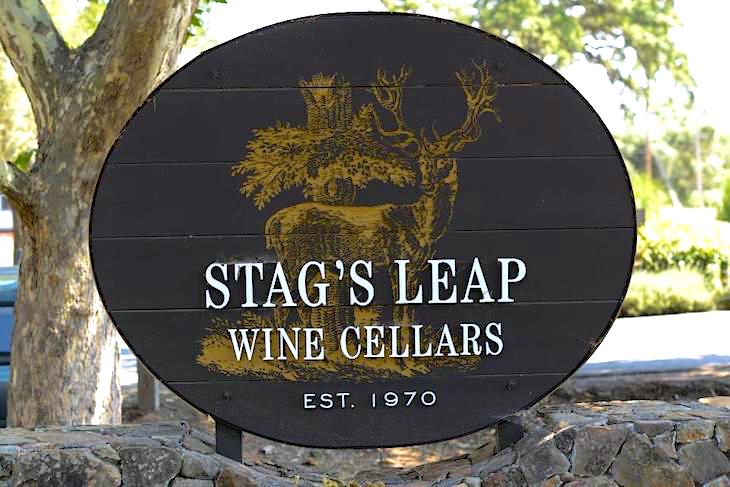
The 1973 Stag’s Leap Wine Cellars Cabernet Sauvignon was the winning red wine in the 1976 Judgment of Paris blind tasting.
Ever since George Taber, formerly a journalist for Time magazine in Paris, wrote about the Judgment of Paris tasting in 1976, hundreds of articles have been devoted to the topic of how Californian wines toppled the best French wines in a blind tasting. Tastings replicating the Judgment of Paris have been conducted all over the world ad nauseam, at every opportunity and every anniversary date.
So it was with a sense of unease that I approached the idea of putting together a fair tasting that would give both the best French and Californian wines an equal opportunity to shine. What inspired this blind tasting were the criticisms I heard about the original Judgment of Paris tasting: Top wines from Bordeaux didn’t have a shot because the wines were too young (5 and 6 years old at the time of the tasting) and Bordeaux needs more time to open. The odds were stacked against Bordeaux since the 1970s was one of their weakest, whereas it was one of the best in California. It didn’t seem fair that six Californian red wines were up against only four for Bordeaux; ditto for the white wine category. Why was Lafite, Margaux, Petrus and other great Bordeaux missing in this lineup? How were these particular wines selected to represent France and California?
And so, the critics of the Paris tasting would conclude, it is no wonder that the 1973 Cabernet Sauvignon beat Chateau Mouton-Rothschild and Chateau Haut-Brion as well as other top French wines. The wines and vintages selected were tilted in favor of California!
With this in mind, I conceived of a tasting that would give each region a fair chance to show their best wines. Together with a small group of wine collectors in Hong Kong, we brainstormed and put together a list of the all-time greatest wines from Bordeaux and Napa Valley. We decided to focus specifically on Cabernet Sauvignon and Merlot-based reds and pit two top regions against each other: Bordeaux and Napa Valley.
The initial greatest hits list from Bordeaux and Napa included 64 legendary wines like Cheval Blanc 1947, Petrus 1961, Le Pin 1982, Heitz Cellars Martha’s Vineyard Cabernet Sauvignon 1974 and Ridge Montebello 1978. One theme emerged after analyzing this extensive list: the 1990s was a fantastic decade for both Napa and Bordeaux, which meant if we narrowed our selection to this decade, from 1989 to 1999, then both regions would have a fair shot of winning. Plus, the advantage of having about 20 years of bottle age would benefit the wines from both regions.
All 16 wines were privately sourced, most donated by collectors, some purchased, to complete a list of eight wines from Bordeaux and eight from Napa Valley. Nine of us gathered for this epic tasting over a long dinner at Épure, a Michelin-starred French restaurant in Hong Kong. We tasted the wines in four flights, with four wines in each flight, over four courses. Each flight included two wines from Napa Valley and two wines from Bordeaux. This would address the concern regarding the Paris tasting about having uneven number of wines represented from California and France.
After each flight, we discussed the wines, but the wines’ identities were not revealed until all the wines were tasted. We kept all the wine glasses on the table so that over the course of four hours, we could go back to any wine that we wanted to re-taste and really take our time in coming to our conclusions. These are some of the greatest wines ever made, and it would be a shame to taste and spit, as one would do in a blind tasting format without food. All the wines were decanted 2 hours before the tasting and served in decanters that were kept at 18 degrees Celsius.
This decade that we were exploring, from the late 1980s to late 1990s, was an exciting time in both regions. In Napa, the 1990s saw the emergence of remarkable wineries like Screaming Eagle, Colgin, Harlan and Bryant Family. By the late 1990s, these “cult” wines, were receiving perfect 100-point scores from American critics. On the other side of the Atlantic, there were a string of great vintages that began in 1988, 1989, 1990 followed by 1995 and 1996. This decade encouraged a renaissance in Bordeaux that began to embrace more precision in the vineyard, stricter yields and meticulous decisions in the cellar. Although very different in style, we fully expected these spectacular Napa wines to stand up well to the likes Margaux, Petrus, Le Pin and Lafite.
Wines in order of tasting:
1 1991 Dominus Estate Cabernet Sauvignon
2 1990 Chateau Margaux
3 1993 Abreu Madrona Ranch
4 1994 Le Pin
5 1996 Chateau Lafite Rothschild
6 1997 Bryant Family Vineyard Proprietor Grown Cabernet Sauvignon
7 1997 Colgin Herb Lamb Vineyard Cabernet Sauvignon
8 1996 Chateau Mouton Rothschild
9 1991 Harlan
10 1990 Chateau Montrose
11 1995 Dalla Valle Maya
12 1990 Chateau La Mission Haut-Brion
13 1995 Araujo Eisele Vineyard Cabernet Sauvignon
14 1989 Chateau Haut-Brion
15 1990 Petrus
16 1994 Screaming Eagle
To read about the results of the blind tasting, read Part II of the Judgment of Hong Kong.
Image Credit: David Paul Morris/Bloomberg









